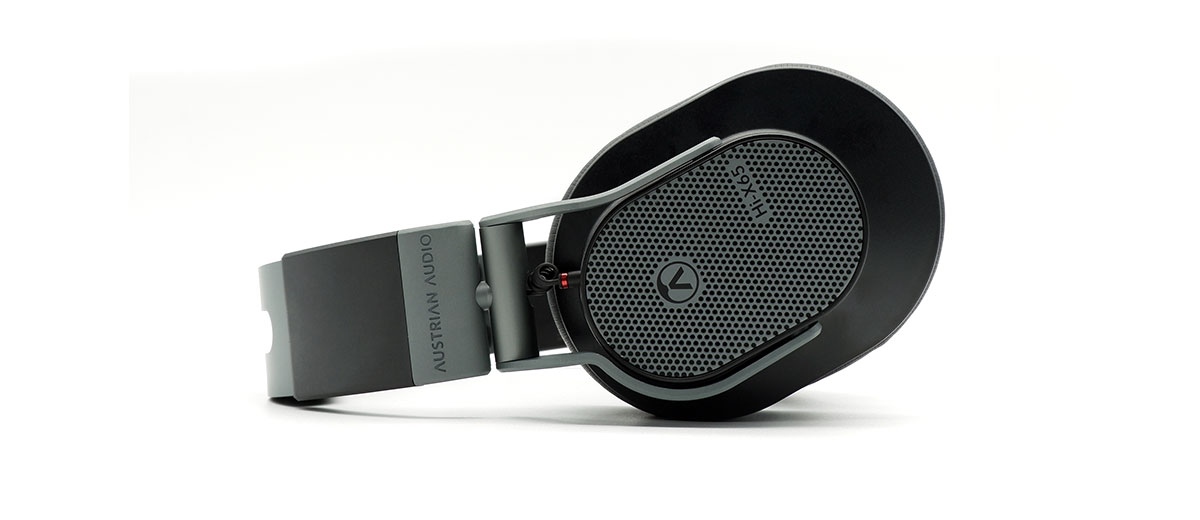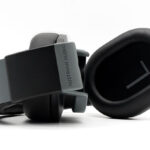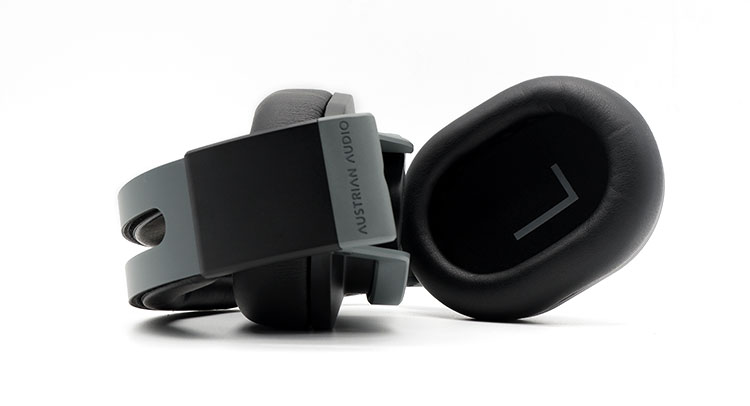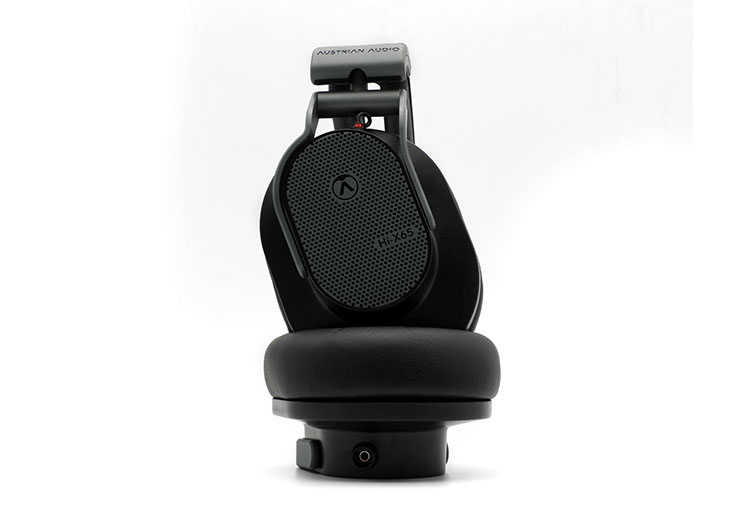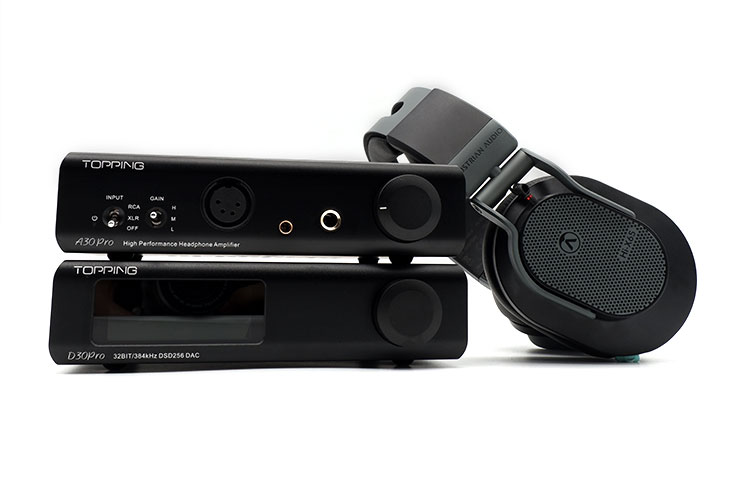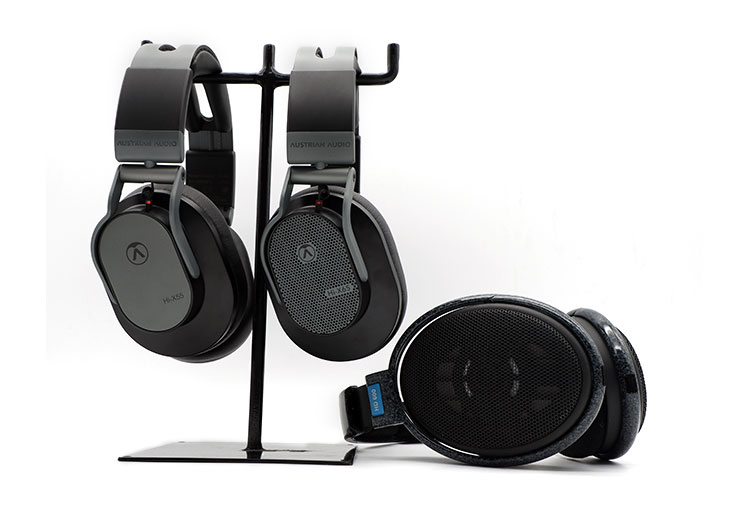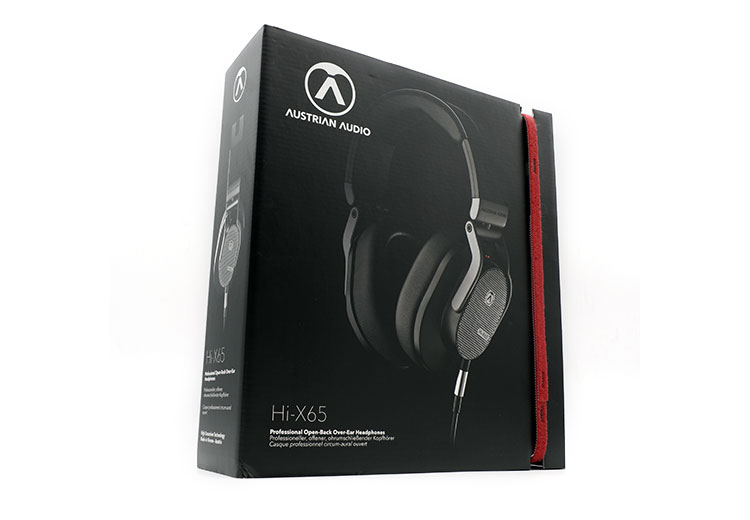The Austrian Audio Hi-X65 is the company’s latest open-back 44mm dynamic driver headphones designed for mixing and mastering. It is priced at $419.
Disclaimer: The Austrian Audio Hi-X65 sent to us is a sample in exchange for our honest opinion in this review. We thank Austrian Audio for this opportunity.
To learn more about Austrian Audio products reviewed on Headfonics you can click here.
Note, this 2-page review follows our new scoring guidelines for 2021 which you can read up on here.
Since Austrian Audio was established in 2017, it would certainly have a relatively sparse product line considering the age of the company. With the experience brought in by their engineers who came from the now-defunct AKG factory in Austria, it’s no surprise that Austrian Audio is quickly filling in the gaps in their product line.
Last year, our review of their closed-back circumaural Hi-X55 earned my reviewer’s choice award. This time around, Austrian Audio has sent over the latest addition to their headphone lineup, the Hi-X65 so this should be an interesting comparison to the Hi-X55 and the reputation it has built to date.
Tech Highlights
The Hi-X65 is Austrian Audio’s take on an open-back mixing and mastering set of headphones. It utilizes pretty much the same technology as the Hi-X55, except that they have heavily retuned the drivers to suit its purpose.
It still features a 44mm dynamic driver, which the team at Austrian Audio has found to be the optimal driver size to move the maximum amount of air while eliminating any driver “wobble”.
The dynamic driver is powered by a ring magnet and a copper-clad aluminum voice coil. This keeps the weight of the driver down, ensuring that it can quickly change its direction, providing a responsive impulse action. These characteristics allow the Hi-X65 to convey a clear and powerful sound through the entire frequency range.
Design
When I first saw the Hi-X65, I immediately had the impression that it looks like a Hi-X55 with open-backed earcups. And true enough, when they arrived, that was the only striking difference between the 2 headphones.
The Hi-X65 has a utilitarian metal headband with a metal rail inlaid on the inside of the headband for accurate and secure adjustments. There is also a cushion on top of the headband which is attached using Velcro so that it can easily be replaced once it has gone through its paces.
Attached to the metal headband are metal yokes that swivel 180° and have a good amount of articulation. While the Hi-X65 has primarily metal parts, all metal parts are properly blunted to ensure that they won’t injure the user.
Plastic parts are sensibly placed to slightly soften the overall aesthetic of the headphone, and I believe the plastic used looks durable which would ensure the longevity of the Hi-X65.
Cable System
Similar to the Hi-X55, the Hi-X65 also utilizes a single-sided cable system, where a detachable cable is terminated in a 2.5mm bayonet system is on the left side.
The single-sided cable system necessitates having some cables going out of the earcups on either side, fortunately, Austrian Audio found a way to keep the wires tucked inside the earcups to prevent accidents.
Earpads
Each earcup has removable earpads, that can easily be replaced by the user. Inside the earpads, there are left and right markings that show which earcup is for which ear. The earpads are secured using 12 clips, so it remains secure throughout usage.
However, as of this writing, the earpads specifically for the Hi-X65 are not yet available on Austrian Audio’s website, since they are different from the ones on the Hi-X55.
Comfort
Given the size of the earcups, one would typically assume that the Hi-X65 would have small earpad holes. However, the Hi-X65 has thin-walled earpads, which gives it larger earpad holes that ensure that there is enough space inside the earcups to fit most ear sizes.
Austrian Audio has taken much care to ensure that the Hi-X65 remains comfortable for longer listening sessions. The cushions on the top of the headband and the earcups are soft enough that no hard parts are pressing against my skin, but the earpads are firm enough to ensure that the headphone won’t fall off my head that easily.
Being an open-back design, the Hi-X65 doesn’t isolate particularly well. Sound tends to leak in quite a bit, but not as much as most other open-back headphones. However, the earpads are designed to give a proper seal around my ears so that sound won’t leak through the earpads.
Packaging & Accessories
The box that the Hi-X65 comes in is a folded cardboard box that can be flattened when necessary. The box is a tri-fold design, with a Velcro closure strap, and the inside is lined with foam inserts that keep the contents safe during storage and transport.
I find it practical that Austrian Audio didn’t invest in a presentation box, and instead went for something simpler and more functional. Even the Velcro strap already has some holes punched in, making it ready to be cut up and upcycled into cable ties.
The inclusions in the Hi-X65 standard package are a carrying pouch, an Austrian Audio sticker, a hand-signed certificate, the manuals, and 2 cables this time. 1 cable is a shorter 1.2m cable and a 3m cable. Both cables are terminated with a 3.5mm plug that allows for a screw-on ¼” adaptor which is also included in the box.
The package is sensible and practical while being functional enough to keep the headphones safe while in storage. This time, Austrian Audio was a bit more generous by including an extra shorter 1.2m cable. And I believe this is a practical addition since this will allow the Hi-X65 to be used in a desktop environment without having to deal with an unruly 3m cable.
Sound Impressions
Bass
Typical of open-back dynamic drivers is that sub-bass roll-off, and it can also be found in the Hi-X65. However, I’m glad to hear that it’s not particularly pronounced, and the sub-bass has a bit of that ethereal sub-bass quality that floods the entire soundstage when it’s needed.
The midbass region is more pronounced than the sub-bass, and there is a measured amount of mid-bass warmth. With drum hits, there is a good sense of attack in each drum hit, and a natural sense of decay. Notes from bass guitars on the other hand are generally sustained enough, but won’t become bloated or boomy.
Each drum hit has a good sense of texture in each hit, but it’s not the last word in detail retrieval with drum hits or bass guitar notes.
Midrange
The Hi-X65 is designed as a tool, and it’s tuned to be used as a mastering headphone, so I don’t expect much in the way of coloration. This holds for the midrange as well, where there isn’t any particular emphasis or recession in the midrange.
The vocal range on the Hi-X65 is textured, and strikingly clear. Being a mastering headphone though, the Hi-X65 needs to restrain any harmonic richness in the vocal range. And it has successfully done so while managing to stay enjoyable and romantic.
With instrument timbre, there is a sense of realism with each note on the piano. Each keystroke on the piano has a good sense of PRAT while being filled in and natural. Guitars sound similarly full-bodied but not exaggerated.
Treble
I’m slightly treble sensitive, so I typically complain about some headphones being too bright. With the Hi-X65, I’m pleased to say that it has an appropriate amount of treble emphasis, allowing midrange instruments’ harmonic overtones to shine through. Piano instrumental tracks in particular have a sense of the piano being there in the room.
The natural treble presentation on the Hi-X65 also allows it to allow the crystalline quality of cymbal hits to shine through. With the faster nature of the drivers though, there isn’t much in terms of splashiness, but it never ends up being too dry.
Treble is also extended quite well, so having a sense of airiness can easily be picked up.
Staging
Being a relatively closed-in open-back design, the Hi-X65 does not end up feeling particularly expansive. I could say that there are images formed respectably far away from my ears. I would venture to guess that some images are formed around 1 foot away from my head when the Hi-X65 is fed a particularly wide binaural recording.
Although the staging is not particularly expansive, the images are formed accurately within the soundstage. Each image has an appropriate space within the stage, and while the images are appropriately large, they don’t tend to blur into each other.
Dynamic Range
The dynamic range on the Hi-X65 is decent, but I wouldn’t say that it displays the softest notes with the gentlest touch. However, when it comes to crescendos such as the ones found in The Greatest Show from The Greatest Showman soundtrack, it perfectly renders the emotional introduction with much gusto.
Synergy
Power
On the specs sheet, the Hi-X65 is rated at an impedance of 25Ω, with a sensitivity of 110dB/V which is equivalent to around 93dB/mW. This leaves the Hi-X65 to be on the medium sensitivity range. With my Xiaomi Redmi Note 9 Pro, I had to push the volume rocker to the maximum for me to have an appropriate volume level.
On my Burson Soloist 3X amplifier, it has to be run at around 22 on high gain through the single-ended output to achieve appropriate listening levels. On the Topping A30 Pro amplifier, on the other hand, I had to run it at around 10 o’clock at medium gain to achieve my normal listening levels.
Overall, the Hi-X65 is not the easiest headphone to drive. However, it can be driven off most sources even a more common cellphone, so most simple DAPs or DAC/Amp combos will suffice.
Performance
With the more neutral tonal balance of the Hi-X65, it isn’t that difficult to find a good source pairing. I was able to pair the Hi-X65 to the Topping D30 Pro/A30 Pro stack, and it paired quite well.
The stack gave the Hi-X65 a bit more euphony and midrange richness, which complements the more measured approach of the Hi-X65’s midrange. The stack also gave the Hi-X65 a bit more width to complement its imaging capabilities.
Another pairing I tried is with the Burson Soloist 3X + Denafrips Ares 2, and this pairing pushed the speed of the Hi-X65’s drivers. This gave the Hi-X65 an even more immediate sense of attack and a clearer sense of imaging separation. However, it left the midrange slightly drier while having a relatively intimate soundstage.
Replacing the Burson Soloist 3X with my Auris Audio Euterpe, the Hi-X65’s midrange is made even richer. This allowed the vocal presentation to be much more romantic and sweeter while having a smoother and more pleasing overall treble response while having a slightly more expanded soundstage.
While the Hi-X65 pairs well with amps and DACs within the same price bracket, it’s obvious that it can scale well with higher-end gear. It’s able to convey the subtle improvements that better amps and DACs can make to the signal chain.
Select Comparisons
Austrian Audio Hi-X55
Design
Being Austrian Audio’s take on an open-back headphone, the Hi-X65 looks almost the same as the Hi-X55. The easiest way to tell the 2 headphones apart is just to look at the open back earcups
Aside from this, they are built exactly the same, from the headband to the yokes, and even the cables are interchangeable. It’s just that the material on the earpads are different between the 2 headphones.
The package of the 2 headphones are also almost identical. Both boxes are secured with Velcro, and the contents are pretty much the same, except that this time, the Hi-X65 has an extra shorter 1.2m cable, which I found useful for desktop use.
Technical
Austrian Audio has stressed that the 44mm dynamic driver is the optimal diameter for dynamic drivers because it allows the driver to move the most amount of air while reducing driver “wobble”.
Both headphones have an impedance of 25Ω, however, the open-back nature of the Hi-X65 makes it substantially harder to drive with a sensitivity of 93dB/mW, compared to the more modest 101dB/mW required by the Hi-X55. I’m figuring that the open-back nature of the Hi-X65 resulted in the jump in power requirements.
Performance
Being a closed-back headphone, one would typically assume that the Hi-X55 is going to be the bassier headphone. The Hi-X55 indeed has an overall more linear response. However, there is a slight mid-bass hump on the Hi-X65 that makes it a bit less neutral.
The midrange on the other hand is a bit drier with the Hi-X55, where the vocal range is a bit more matter of fact. The instrument timbre on the other hand is a bit brighter, but the weight of piano keystrokes is equally felt with both headphones.
While the treble is generally more pronounced on the Hi-X55, where it may sometimes straddle the line between crystalline and too bright, the Hi-X65’s treble tuning is comfortably on the safer side. This is not to say that the Hi-X65 is less detailed, because it’s actually equally detailed as the Hi-X55, except that it’s slightly more subdued.
Being a closed-back headphone, the Hi-X55 has a more closed-in soundstage, and that’s to be expected. However, imaging ended up being more chiseled and finite with the Hi-X55, while the placement is simply more appropriately spaced out on the Hi-X65.
When it comes to dynamic range, the Hi-X55 can present gentler passages with much finesse where it simply plays softer piano keystrokes with more precision. Emotional crescendos are equally engaging on both headphones though.
Sennheiser HD600
Design
With both headphones being designed for mixing and mastering, the HD600’s current packaging seems to be quite similar to what you get with Austrian Audio’s offering, which is primarily a cardboard box. Except that the Sennheiser ships the HD600 without the extra accessories such as the drawstring bag, and the extra cable.
The headphones themselves look quite different with the HD600 sporting a fixed design, and more plastic in the build compared to the more portable folding metal design on the Hi-X65. The HD600 though has a dual entry system for the cables, so the option of going balanced is much easier to implement with the HD600.
The earcups on the HD600 are actually larger, particularly when you look at them from the outside. Internally though, the size of the holes inside the earpads are almost the same, since the Hi-X65 has thin wall ear pads. So both headphones can easily accommodate the same size of ears.
Technical
While both headphones can be used in a studio environment, the HD600 has a higher impedance rating at 300Ω while having a more modest 105dB/mW sensitivity rating. So even if the Hi-X65 has a more demanding 93db/mW sensitivity rating, it ends up only being slightly easier to drive when compared to the HD600.
In practical terms, the HD600 would require about 15 volume notches on my Burson Soloist 3x to level match both headphones.
Performance
With both these headphones being used for mixing and mastering, I was expecting them to have a similar sound signature. In some respects, this turned out to be true, but there are some striking differences between the 2.
The first thing that I noticed is that the HD600 has a more classically warm, and slightly more laid-back tonal balance. With a touch more of that mid-bass emphasis, and an even more rolled-off sub-bass region. The weight of each bass note seems a bit more substantial with the HD600, however, it is a bit more smoothed out comparatively.
When you think of the HD600, the typical thing that you would think of is the rich and natural midrange presentation. And compared to the Hi-X65, the HD600 has a warmer and more lush vocal presentation, making vocalists like Josh Groban fuller and sweeter.
Instrument timbre is actually equally natural on both headphones, where the HD600 has a slightly warmer tilt in contrast to the Hi-X65’s brighter timbral shift.
Neither headphone has a particularly subdued treble range in general terms, however, the HD600 has a slightly more laid-back treble response comparatively. Detail retrieval in the treble range is about equal, but the HD600 has a bit more sustain with cymbal hits.
The soundstage on the HD600 is markedly more intimate, but imaging is equally accurate if not a touch more defined on the HD600. With images formed on the HD600 looming a bit larger, but still staying very chiseled and appropriately spaced out. The dynamic range on the other hand feels a bit more delineated, particularly with its ability to present gentler tones more daintily.
Our Verdict
When I received the Hi-X65, I was expecting it to be just an open-back version of the Hi-X55, since it has practically the same build and packaging for the most part. Which means that it’s reliable, practical, and transportable.
I understand that the Hi-X65 was designed to be used as a tool for mixing and mastering. However, I can confidently say that it can also create an enjoyable listening experience because of its slightly richer presentation while managing to remain reliably neutral and highly detailed.
Austrian Audio Hi-X65 Specifications
- Frequency range: 5 Hz – 28 kHz
- Sensitivity: 110 dBspl/V
- THD (@ 1kHz): < 0.1%
- Impedance: 25 Ω
- Input Power: 150 mW
- 2 cables (detachable): 3 m + 1.2 m
- Connector: 5 mm (1/8”)
- Adapter (included): 5 mm to 6.3 mm (1/8” to 1/4″)
- Weight (without cable): 310 g

